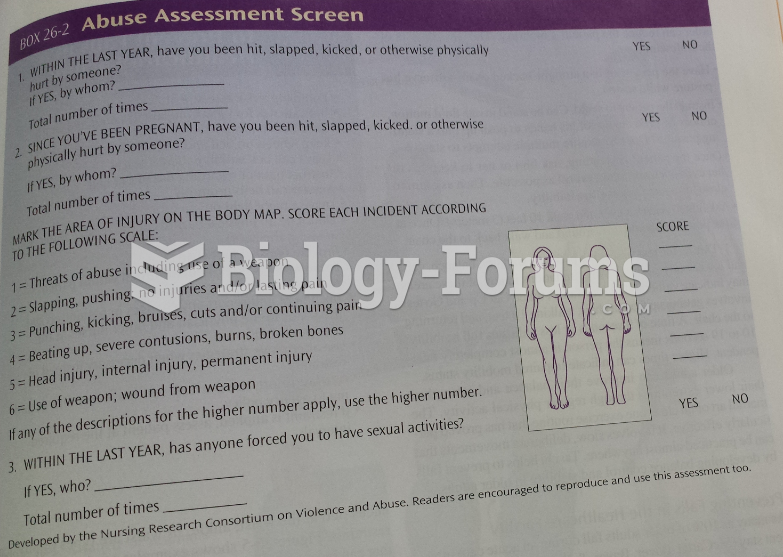Answer to Question 1
Correct Answer: 2
Carpal tunnel is a condition caused by compression of the median nerve. The test described is called Phalen's test, and when used on individuals with carpal tunnel syndrome, 80 percent experience pain, tingling, and numbness that radiates to the arm, shoulder, neck, or chest within 60 seconds. Another assessment for carpal tunnel syndrome is called Tinel's sign, and is elicited by percussing lightly over the median nerve in each wrist. The test is positive if the client feels numbness, tingling, and pain along the median nerve. Arthritis typically causes pain and limitations in movement but not numbness and tingling. Crepitus is a grating sound caused by bone fragments in joints and is suggestive of degenerative disease, trauma, or inflammatory conditions. Dupuytren's contracture involves inability to extend the fourth and fifth fingers but is a painless, inherited disorder.
Answer to Question 2
Correct Answer: 2
The spine should be visually inspected by viewing the back of the client. The client should be asked to stand during this assessment. This will allow the nurse to assess for symmetry. The spine should appear straight when viewed from the back. The cervical and lumbar spine should appear concave, and the thoracic spine should appear convex. Bending and stretching will not illicit the needed information about the spine. Range of motion and flexibility may be assessed by asking the client to bend over or stretch.







